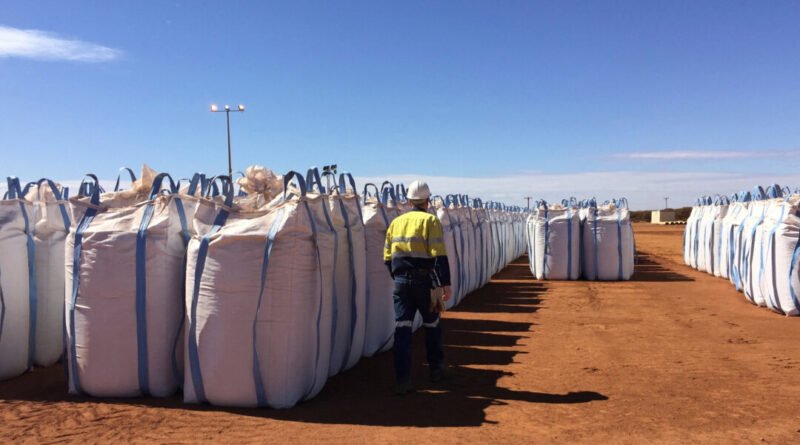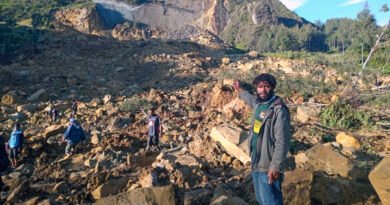Brazil, with West’s support, enters race to rival China in rare earth industry dominance
Brazil possesses the world’s third-largest reserves of rare earth minerals.
With substantial Western investment and expertise, Brazil has recently joined the initiative led by the United States to challenge China’s dominant position in the global rare earth sector. The country has opened the first of many planned mines to harness its rare earth reserves.
Together with increased investment and collaboration in rare earth exploration and development by Austria, the United States, Japan, Vietnam, among others, experts believe that the Chinese communist regime is gradually losing its influence in geopolitics and its rivalry with the West.
In another development, the Australian government announced an investment of A$840 million ($550 million) in the initial combined rare earth mine and refinery managed by Arafura Rare Earths in northern Australia.
Vietnam intends to revive its largest rare-earth mine by the end of 2024 in partnership with Western firms like Australia’s Blackstone Minerals Ltd. to counter China’s dominance in the sector.
In March 2023, Japanese company Sojitz, in association with the Japan Organization for Metals and Energy Security, declared a A$200 million ($134.7 million) investment in Australia’s Lynas Rare Earths to reduce its reliance on China.
The debut of Brazil’s first rare earth mine, Serra Verde, this year marks the country’s entry into the global race and the Western effort to diversify the supply chain of this strategically crucial resource.
Rare earth, a group of 17 elements crucial for batteries, computer chips, and electric vehicles, is primarily controlled by China, with the United States and Burma (Myanmar) following closely in production.
However, Brazil holds the third-largest rare earth reserves and aims to utilize its advantageous factors like low labor costs, clean energy, established regulations, and proximity to the U.S. market to establish a prominent rare earth industry. Plans are in place to build Latin America’s first magnet plant for rare earth metal production by the year’s end.
It took 15 years for the Serra Verde mine to commence production, backed by Western countries’ contributions and incentives. The company anticipates yielding 5,000 tons this year, with the potential to double output by 2030.
“Serra Verde and Brazil possess substantial competitive advantages that could drive the development of a globally significant rare earth industry in the long run,” stated Serra Verde CEO Thras Moraitis, citing favorable geology, hydropower access, established regulations, and a skilled workforce.
“This sector is still emerging and will need ongoing support to establish itself in a highly competitive market, where only a few players control key processing technologies,” he added. Industry analysts project that Brazil might have two or three additional rare earth mines by 2030.
China, with a rare earth production of 240,000 tons last year, significantly exceeds U.S. production, according to U.S. Geological Survey data. Moreover, China processes about 90 percent of the world’s rare earths into permanent magnets, essential in various technological applications such as wind turbines, electric vehicles, and missiles.
In retaliation, the United States, the European Union, and Japan have initiated or updated national critical mineral supply strategies in recent years and have devised extensive plans to invest in more diversified supply chains to reduce reliance on China.
On June 18, the U.S. government announced the establishment of the Select Committee’s Policy Working Group, which will focus on countering the Chinese Communist Party’s control of critical mineral supply chains.
Meanwhile, several countries have joined the race to challenge China’s dominance in the sector, accelerating rare earth exploration and industrial development. This concerted effort among the United States, Australia, Laos, Burma, Africa, and other regions and countries is shaping a more diverse international rare earth supply chain pattern.
In the last two years, rare earth prices have plummeted by 70 percent.

China’s rare earth industry is witnessing challenges. Major listed Chinese rare earth companies that were profitable last year have reported deficits in the first quarter of this year due to declining rare earth prices and efforts from the West to diminish reliance on China.
China Rare Earth, Guangsheng Nonferrous Metals, and Shenghe Resources incurred losses ranging from around 289 million yuan to 304 million yuan. The only exception was Northern Rare Earth, which made a modest profit.
Strategic Importance of Rare Earths
Su Tzu-yun, researcher and director of the Division of Defense Strategy and Resources at Taiwan’s Institute for National Defense and Security Research, emphasized that producing an F-35 fighter jet requires 122 kilograms (269 lbs) of rare earth for materials utilized in its radars, computers, engines, and fuselages.

He noted that Beijing seeks to exploit its rare earth dominance strategically, using export bans as leverage in intensified relationships with the West. This approach can disrupt industrial production and the Western economy, leading to significant political repercussions.
Sun Kuo-hsiang, international affairs and business professor at Nanhua University in Taiwan, pointed out that Brazil’s rare earth production can offer a viable alternative source, reducing dependency on China.
He highlighted the crucial role Brazil can play in these geopolitical competitions, remarking that “if China continues to weaponize rare earths, Brazil’s production can counterbalance its strategic threats.” He added that this diversification can empower democratic nations to engage in technological competition with China more assertively and sustainably.

Mr. Sun emphasized that investments from developed nations in emerging markets like Brazil can expedite diversified rare earth development. Such strategic initiatives could bolster the ability of free countries to counter China’s influence based on rare earth sources, enabling sustained competition with China and supporting broader strategies in key regions like the Indo-Pacific.
Luo Ya and Reuters contributed to this report.





